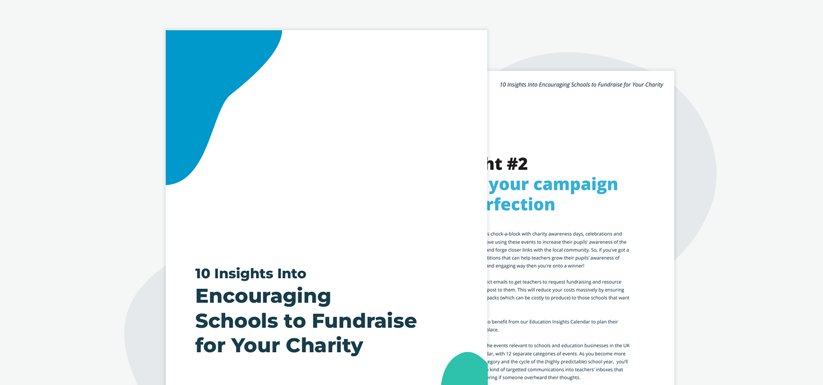Understanding school funding statistics for 2023-2024’s budget
Understanding school funding statistics for 2023-2024’s budget
The government have announced school budget figures for 2023-2024. Get the details, and secure your share of the £57.3 billion.
The government have announced school budget figures for 2023-2024. Get the details, and secure your share of the £57.3 billion.
The Department for Education has just announced the next academic year’s funding allocations. And it’s great news for the education sector!
According to the recent report, the amount of funding to be allocated to schools in 2023-2024 will see a significant increase compared to the current academic year…
Headline facts and figures
- The total funding to be allocated to schools is at £57.3 billion.
- This represents a 64% increase from 2010-2011, when funding levels stood at £35 billion (£47 billion when adjusted for inflation).
- On a per-pupil basis, funding will increase to £7,220, compared to £5,180 in 2010-2011 (£6,700 with inflation).
Who’s the funding for?
The funding will be released to all state-funded schools in England, covering primary and secondary maintained schools and academies, special schools, pupil referral units (including alternative provision academies and free schools), local authority alternative provision, and non-maintained special schools. For mainstream schools, this funding applies to pupils in reception through to year 11. Why has the funding increased?
The figures for 2023-24 are based on a combination of published funding allocations, the budget settlements agreed at the 2021 Spending Review and 2022 Autumn Statement, and some estimates of small grant and high needs spending.
What funding grants are included in the new figures?
- Dedicated schools grant (including the schools block, most of the high needs block and the central school services block (CSSB); but excluding the early years block and post-16 funding in the high needs block).
- Pre-16 high needs place funding in non-maintained special schools, SEN schools, and alternative provision free schools.
- Pupil Premium.
- Mainstream schools additional grant.
- Early career framework grant.
What’s not included?
- PE and Sport Premium.
- Universal infant free school meals (UIFSM).
- COVID-19 recovery premium funding.
- School-led tutoring grant.
- Schools supplementary grant.
Key funding areas
One of the key areas of focus for the increased funding is to help schools improve their facilities and resources. The government has stated that a significant portion of the funding will be used to upgrade and modernise school buildings, as well as to improve the quality of equipment and technology available in classrooms. This will help to ensure that students have access to the best possible learning environment and resources, which will in turn help to improve their education and future prospects.
Another important aspect of the increased funding is to support teacher development and training. With the extra resources available, schools will be able to provide more training and professional development opportunities for their teachers, which will help to keep them up-to-date with the latest teaching methods and strategies. This is essential for ensuring that teachers are equipped to provide the best possible education for their students, and for keeping the education sector at the forefront of innovation and progress.
The impact on businesses selling to schools
The increase in funding for schools represents a major opportunity for businesses selling to the education sector. Although the new funding won’t be delivered until the next academic year, now’s the time schools will be starting their research – particularly for the larger investments, such as facility maintenance and upgrades, or Management Information Systems.
Even for those smaller purchases, such as textbooks or homework resources, getting your name into schools now means you’ll be a friendly face and well-known name ahead of the new year. Although, in all likelihood, if you pull out all the stops with your email marketing, you won’t have to wait until the new budget release to make the sale!
But bigger budgets don’t just mean bigger sales for you. No doubt schools will be looking to expand their range of education offerings to their students, using their increased funding to explore new providers and services they’ve previously not used, particularly in the field of EdTech.
While this is all great news for education businesses, it’s important to keep a few things in mind. While funding is rising above inflation, schools have been one of the hardest industries hit by the cost of living crisis, and this funding increase won’t solve all of their problems. In some of the most cash-strapped schools, this new funding may need to go straight into plugging pre-existing gaps. It’s important to still be just as sensitive about finances in your communications, and schools will, as always, be grateful for any free support or discounts you can continue to offer next year.
They’ll still be wanting to make sure they’re getting the best value for money, and balance this with delivering the most high-quality learning experience possible. Showing teachers you can help them easily achieve both will set you on the path to a long-term buying relationship.
What next?
Want to learn more about next year’s funding allocations, the other streams available to schools, and how you can secure your share?
Speak with our education specialists on info@sprint-education.co.uk, or 01684 297374, and discuss how this news will affect your business.
Tags
Education Budget
Education News
School Budgets
Selling to Schools
Selling to Teachers
Similar Articles


VIDEO: Connecting with Schools - Selling to Schools Insights Chapter 3
Join us as we delve into chapter 3 of The State of Selling to Schools report 2023. Together we reveal what the findings show us about when to connect with teachers, why certain times are more popular and the ideal notice periods for different education business providers.


Marketing Charities and Fundraisers to Schools
Learn 10 game-changing insights to encourage schools to fundraise for your charity and enhance your education marketing campaigns when emailing schools.


Expert marketing to K-12 support and solutions
Expert marketing to K-12 solutions
Email Principals, Teachers, and District Staff Inboxes
Email teachers and staff inboxes
Sell More to US and Global Schools and Districts
Sell more to schools and districts
































